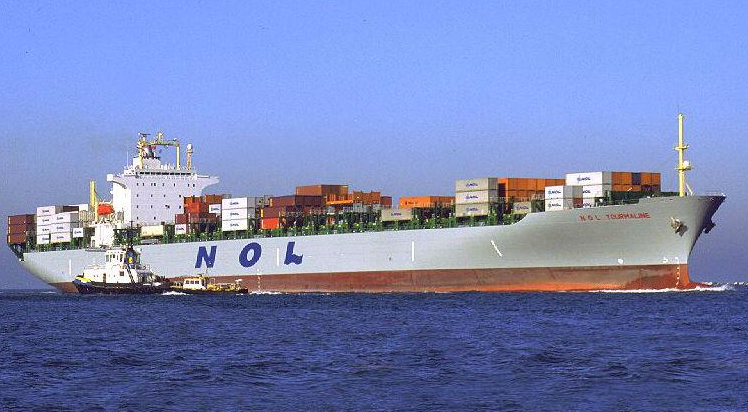With shares of SGX-listed shipping firm Neptune Orient Lines surging again today on rumours that a formal bid from French shipping behemoth CMA CGM was imminent, the focus has turned to why European players are so eager to grab an Asian firm like NOL and just how big a premium they might pay to boost their footprint in the region.
NOL whose stock tanked 87% from its 2007 peak to its trough in August has soared 37% over the past three months in anticipation of a distressed sale to Danish conglomerate AP Moeller-Maersk or the Paris based CMA CGM.
But low valuations are not the only thing the European buyers see in NOL.
Amid the dark clouds in the container shipping business, there is clearly a very visible silver lining. Container shipping business has already seen the bottom or is very close to a bottom says Philipp Gamper, an analyst for Bank J. Safra Sarasin in Geneva.
“The (container) shipping industry could present interesting investment opportunities for risk -aware investors over the next year,” Gamper, notes in a report published on Nov 16. “These will be companies that have been nimble at identifying opportunities arising from challenges and that have an integrated business model geared to sustainability.”
Container shipping industry has been plagued with overcapacity over the past few years in the face of reduced demand due to sluggish global trade which has helped forced shipping rates down. Slower growth in China and sluggish demand in developed economies as capacity came on stream in the aftermath of the global financial crisis weighed heavily on the container shipping rates.
Bank J. Safra Sarasin report notes that due to dynamic growth rates achieved from the mid-1960s through to 2008, substantial number of new ships were ordered. Over the past couple of years those ships have been coming on stream and more are likely to enter service in the near future. “With shipping companies reluctant to scrap old ships that have already been written off, excess capacity will persist up to early 2016,” Gamper notes.
That yawning imbalance between supply and demand has helped pushed down container freight rates. The significant drop in Chinese exports to Europe — China’s largest trading partner — as well as the slowing of China’s economy, which triggered a decline in import volumes, is one of the main reasons for the plunging freight rates. Gamer says rates are not likely to improve before 2016, and indeed may only improve next year if there is a sustained stabilisation of the Chinese economy.
The container shipping industry has also been confronted with the standardisation of the sea-based transportation which has meant that shipping lines find it hard to differentiate themselves which in turn has put more pressure on pricing. This is in contrast to freight and logistic companies, such as Kuhne + Nagel or Deutsche Post DHL, which have global footprints.
But the Bank J. Safra Sarasin analysts says if container capacity declines as expected over the next year, and demand starts to picks up in response to a recovering Chinese economy and recovery in Europe, investors could find some interesting investment opportunities in the shipping sector.
Because the container shipping sector faces a challenging market with overcapacity on the supply side, low and very volatile demand and depressed freight volumes, efficiency optimiasation is increasingly important, steering the industry to greater sustainability purely due to commercial reasons. Market winners will also gain cost advantages through global alliances, Bank Sarasin says.
The way Gamper sees it, “cost flexibility is becoming increasingly important, driving alliances which allow firms to optimise load quotas collectively while reducing the number of journeys.” A prime example, he notes, is the G6 Alliance, which includes the German Hapag-Lloyd group and five Asian shipping companies: APL, a wholly-owned subsidiary of NOL; Hyundai Merchant Marine; Mitsui O.S.K. Lines; Japan’s NYK ; and Hong Kong-listed OOCL, Orient Overseas Container Line.
Yet Bank Sarasin analyst argues that strict anti-trust regulation prevent price agreements among shipping companies. “Alliances through mergers and acquisitions are difficult due to the negative synergy effects on revenue and the inflexibility of owners,” he says. “Since operating on a global scale is essential, companies must invest in bigger ships and seek selective alliances with rival firms.”
Left with few alternatives, container firms like Maersk and CMA CGM are trying to slash costs through economies of scale, commissioning ultra-large container ships since sheer size plays a key role in the race for cost leadership, he notes.” Larger ships operating at reduced speeds matched to the ship’s construction can reduce fuel costs by up to 50%,” he writes in his report. An example is profitable global market leader Maersk, which has a 10% cost advantage over the sector.
Bolt-on mergers like CMA CGM’s pending bid for NOL are one of few ways global container shipping firms can grow, cut costs and stay profitable.
NOL stock price was hovering around $1.12 late Tuesday afternoon or 5.12% up over Monday’s close. Given the dynamics of the shipping industry it won’t be surprising if rival bids emerged.
Source: The Edge Markets
Copyright Ships & Ports Ltd. Permission to use quotations from this article is granted subject to appropriate credit given to www.shipsandports.com.ng as the source.
